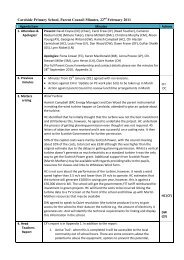Chemical Changes and Structure
Chemical Changes and Structure
Chemical Changes and Structure
Create successful ePaper yourself
Turn your PDF publications into a flip-book with our unique Google optimized e-Paper software.
Formation of ions (N4*)<br />
Aim: What happens when atoms swap electrons?<br />
n covalent bonding, atoms share electrons to reach the same stable electron arrangement<br />
as a noble gas. The formation of an ion is another way in which an atom can reach a stable<br />
electron arrangement.<br />
Metal ions have a positive charge.<br />
The sodium ion<br />
The atomic number of sodium is 11. The electron arrangement is 2, 8, 1.<br />
Looking at the atomic numbers, the nearest noble gas to sodium is neon with electron<br />
arrangement 2, 8.<br />
A sodium atom can reach this electron arrangement by losing one electron. Since an<br />
electron has one unit of negative charge, the charge left on the sodium ion will be onepositive.<br />
The sodium ion is represented Na+ (there is no need to include the ‘1’ before the +).<br />
sodium atom<br />
Na<br />
2, 8, 1<br />
sodium ion<br />
Na +<br />
2, 8<br />
The calcium ion<br />
The atomic number of calcium is 20. The electron arrangement is 2, 8, 8, 2.<br />
Looking at the atomic numbers, the nearest noble gas to calcium is argon with electron<br />
arrangement 2, 8, 8. A calcium atom can reach this electron arrangement by losing two<br />
electrons. Since an electron has one unit of negative charge, the charge left on the calcium<br />
ion will be two-positive.<br />
The calcium ion is represented Ca 2+ .<br />
calcium atom<br />
Ca<br />
2, 8, 8, 2<br />
calcium ion<br />
Ca 2+<br />
2, 8, 8<br />
1


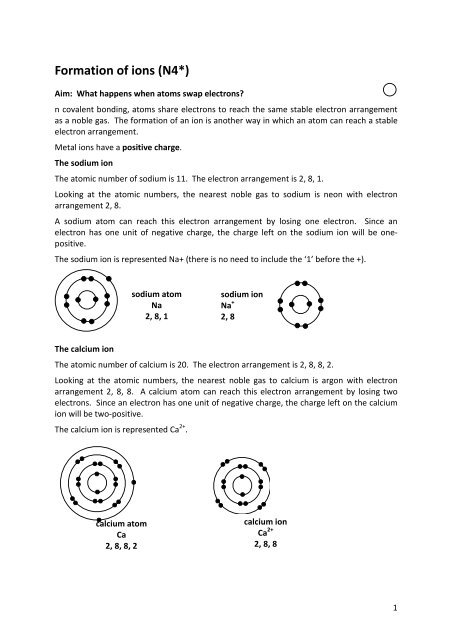
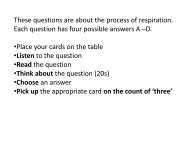
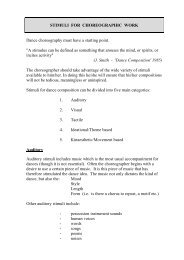


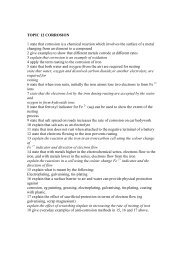

![Eastwood_Area_Catchment_updated_16-5-11[1]](https://img.yumpu.com/17146012/1/184x260/eastwood-area-catchment-updated-16-5-111.jpg?quality=85)

